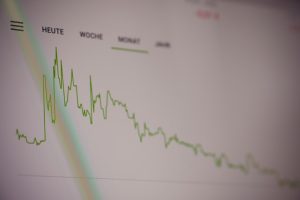The Moving Average Convergence Divergence (MACD) is a popular technical analysis indicator used by forex traders to identify trends and potential reversals. It is a versatile tool that can be used in different trading strategies and timeframes, from scalping to swing trading and long-term investing. In this article, we will explain what is the MACD on forex, how it is calculated, and how traders can use it to make informed trading decisions.
What is the MACD on forex?
The MACD is a momentum oscillator that measures the difference between two exponential moving averages (EMA) of different lengths, typically 12 and 26 periods. The MACD line is the difference between the 12-period EMA and the 26-period EMA, and it is usually plotted as a histogram, a line, or both on the forex chart. The signal line is a 9-period EMA of the MACD line, and it is used as a trigger for buy and sell signals.
The MACD is a lagging indicator, which means it follows the price action and lags behind it. However, it is also a leading indicator in the sense that it can anticipate potential trend changes before they happen. When the MACD line crosses above the signal line, it is considered a bullish signal, indicating that the trend is likely to continue upwards. Conversely, when the MACD line crosses below the signal line, it is considered a bearish signal, indicating that the trend is likely to continue downwards.
How is the MACD calculated?
The MACD formula is simple but powerful: MACD Line = 12-Period EMA – 26-Period EMA. The result is a value that oscillates around zero, reflecting the difference between the two moving averages. When the MACD line is positive, it means that the short-term EMA is above the long-term EMA, which is a bullish signal. When the MACD line is negative, it means that the short-term EMA is below the long-term EMA, which is a bearish signal.
The signal line is calculated as a 9-period EMA of the MACD line. This line smooths out the MACD line and generates more reliable signals. When the MACD line crosses above the signal line, it is a bullish signal, indicating that the trend is likely to continue upwards. When the MACD line crosses below the signal line, it is a bearish signal, indicating that the trend is likely to continue downwards.
Traders can also use the MACD histogram, which is the difference between the MACD line and the signal line. The histogram can be plotted as a bar chart, where positive values are shown in green and negative values are shown in red. When the histogram is above zero, it means that the MACD line is above the signal line and the trend is bullish. When the histogram is below zero, it means that the MACD line is below the signal line and the trend is bearish.
How can traders use the MACD on forex?
The MACD is a versatile tool that can be used in different ways depending on the trading style and objectives. Here are some common ways to use the MACD on forex:
Trend identification: Traders can use the MACD to identify the direction and strength of the trend. When the MACD line is above the signal line and the histogram is positive, it is a bullish trend. When the MACD line is below the signal line and the histogram is negative, it is a bearish trend. Traders can use this information to enter trades in the direction of the trend and avoid trades against the trend.
Divergence detection: Traders can use the MACD to detect divergences between the price action and the momentum. A bullish divergence occurs when the price makes a lower low and the MACD makes a higher low, indicating that the momentum is shifting upwards. A bearish divergence occurs when the price makes a higher high and the MACD makes a lower high, indicating that the momentum is shifting downwards. Traders can use this information to anticipate potential trend reversals and adjust their positions accordingly.
Signal generation: Traders can use the MACD to generate buy and sell signals based on the crossover between the MACD line and the signal line. When the MACD line crosses above the signal line, it is a bullish signal to buy. When the MACD line crosses below the signal line, it is a bearish signal to sell. Traders can use this information to enter and exit trades with more confidence and accuracy.
Conclusion
The MACD is a popular and powerful technical analysis indicator that can help forex traders identify trends and potential reversals. It is a lagging indicator that follows the price action but can also anticipate potential changes in momentum. Traders can use the MACD to identify the direction and strength of the trend, detect divergences between the price action and the momentum, and generate buy and sell signals based on the crossover between the MACD line and the signal line. However, like any technical indicator, the MACD should be used in combination with other tools and analysis to make informed trading decisions.






